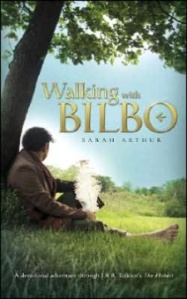
American Patriots: Answering the Call to Freedom, by Rick Santorum, is a powerful book that every American should read, if only to gain an understanding that the United States was founded and fought for by many men and women who held Biblical beliefs and incorporated those beliefs into their ideas of what government should be—and what it should not be.
Essentially, the book is a series of mini-biographies about the inspiring lives of some of the heroes and heroines of the Revolutionary War. The mini-biographies are organized around the themes of Life, Liberty, and the pursuit of Happiness—words you probably recognize as part of the Declaration of Independence.
Often, the people’s lives detailed in this book are those of people you probably haven’t heard of (unless you are an avid and accomplished student of history), yet these people played pivotal roles in securing the freedoms enjoyed in the United States. American Patriots challenges the reader to gain an appreciation and understanding for the level of commitment our predecessors held in their fight against the British Empire for life, liberty, and the pursuit of happiness.
The quality and design of the book is interesting as well, as the pages have an “antiqued” look and design. The printing quality is clear and pleasing to read. American Patriots is an easy read, and it can be completed in a few hours. (The book is about 130 pages long.) The book is not an in-depth look at the Revolutionary War, nor does it go into intimate detail regarding the people discussed. I don’t think the purpose of the book was to provide a complete account of the Revolution or the Patriots’ lives, and I reviewed it with that understanding. With that frame of mind, I give American Patriots 5 out of 5 stars.
Here are just a few of the inspiring people you will read about in American Patriots:
Charles Carroll, a man worth about thirty million dollars in today’s money, had signed the Declaration of Independence, certainly putting his immense wealth and his very life at risk. Why did he risk it? His own words reveal his beliefs that motivated his commitment: “God grant that this religious liberty may be preserved in these States, to the end of time, and that all believing in the religion of Christ may practice the leading principle of charity, the basis of every virtue” (77-78).*
* all numbers in parentheses refer to page numbers in American Patriots
Elias Boudinot, who among other things, spent $45,000 of his own funds to furnish provisions for American prisoners, was another example of a true Patriot. His Biblical values pervade the story of his life, and he went on to help create the American Bible Society in 1816 (95-101).
Emily Geiger was a young woman who believed Heaven had sent her to help the Patriots. She carried a message to General Sumpter—after first being captured by the British. Her story was interesting, and she certainly risked her life for the cause of freedom (80-82).
John Laurens gave the ultimate sacrifice for this country—even when that sacrifice could have been avoided. Laurens, against the wishes of his father, joined the Patriot cause. Of significance is that John Laurens was a wealthy man and could have avoided conflict, yet he willingly gave up his life in battle for his belief that all people (including the 260 slaves his father owned) should be free. Santorum reports that John Laurens’s grieving father “arrang[ed] for the freedom of all 260 family slaves, as his son, the advocate of the right to life and freedom for all, had requested (23).
Laurens’s dedication and ultimate sacrifice changed another man’s beliefs (i.e., his own father’s—who stood much to lose by freeing his slaves). That sacrifice had the effect of freeing 260 human beings from bondage. John Laurens was a true Patriot for the cause of the value and dignity of life!
Francis Marion was a real hero who served as the model for Mel Gibson’s character, Benjamin Martin, in the movie, The Patriot. Marion fought in the French and Indian War and picked up some of the guerrilla tactics of the Cherokee Indians. Like his fictional counterpart, Marion and his small group of men hid in swamps and used surprise tactics to deal strong blows against the British. The British, thwarted by Marion’s tactics, named him “Swamp Fox” (67-72).
_________________________________________________________________________________________________________________
THE BOTTOM LINE: If you are an American, you should read this book. You owe it to yourself and to your country to be knowledgeable
about the sacrifices our founding fathers (and mothers) made and the belief systems that those Patriots held.
***NOTE***In exchange for my honest review, Tyndale House Publishers provided me with a complimentary copy of the book. In no way was my receipt of the book contingent on a favorable review. My review is my own opinion.


 C.S. Lewis & Mere Christianity: The Crisis that Created a Classic, by Paul McCusker, is a fun read for fans of C.S. Lewis’s work. It is a relatively short book, and is written in a clear style that makes it easy to read.
C.S. Lewis & Mere Christianity: The Crisis that Created a Classic, by Paul McCusker, is a fun read for fans of C.S. Lewis’s work. It is a relatively short book, and is written in a clear style that makes it easy to read.
 Dead Lawyers Tell No Tales, by Randy Singer, makes for a fun read. This could definitely make one’s beach-reading list for the summer.
Dead Lawyers Tell No Tales, by Randy Singer, makes for a fun read. This could definitely make one’s beach-reading list for the summer.


